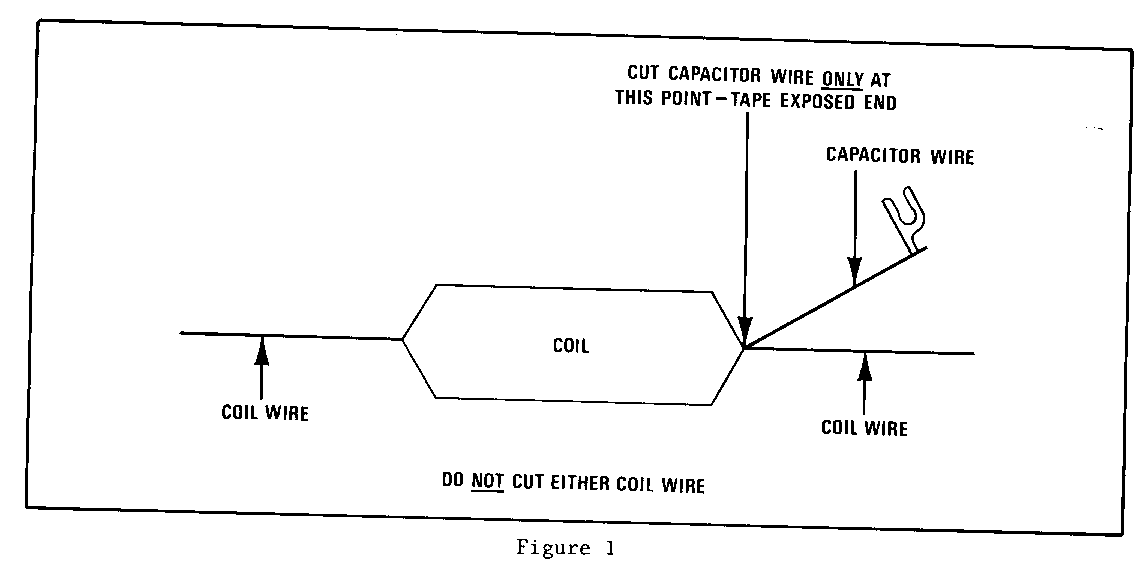RADIO NOISE SUPPRESSION AM BAND

1981 DFI ENGINE AM RADIO NOISE
Some 1981 DFI equipped Cadillac vehicles may experience a condition of AM radio noise interference at about 660 on the AM band. Should this condition be encountered, it can be corrected by filtering the input and output circuits to the Electronic Control Module. The procedure is as follows:
1. Tune radio to 660 (low end) on AM band; static and "pops" might be audible at mid-volume range with engine running.
2. Check and tighten antenna ground screws on fender for C-car (8.0-10.0 N.m torque). Check and tighten escutcheon nut on E-K cars (torque 3.8-5.1 N.m).
3. Check to see that twist lock antenna lead-in interconnect is secure at the antenna.
4. Re-evaluate radio noise off station and on weak AM station. If noise is still present, perform steps 5 through 10.
5. Install coil portion only of radio filter package, P/N 1224205 (available from GMWDD), in series on lead from pin #7 (BLU-DRK/WHT) in P2 connector at the ECM. Clip off the wire to the capacitor in the filter package; see Figure 1 and schematic Figure 2 on reverse side.
6. In connector P1 at the ECM, splice (scotch lock) into the orange (ORN) wire from pin #9 a 0.5 MFD capacitor (P/N 1960957). It is necessary to cut connector off the black wire capacitor lead.
7. Connect another 0.5 MFD capacitor (P/N 1960957) to light blue (BLU-LGT) wire at pin #16 in the P1 connector by repeating above step.
8. Ground both capacitors to ECM box. This can be done by connecting the two capacitors together and leading a wire from this connection to the ECM box at the ECM ground strap connection near connector P2.
9. On "E" and "K" cars only, attach a ground strap from engine ground strap bolt to inlet pipe on accumulator using an aircraft-type hose clamp. (Use strap 12000119 or equivalent ground strap.)
10. Check radio for performance on weak AM stations. If performance is still unsatisfactory, proceed with common methods of radio diagnosis as described in the 1981 Cadillac Service Information Manual.
For warranty purposes, use Operation Number T0036 at 1.4 hour when performing steps 5 through 10.


General Motors bulletins are intended for use by professional technicians, not a "do-it-yourselfer". They are written to inform those technicians of conditions that may occur on some vehicles, or to provide information that could assist in the proper service of a vehicle. Properly trained technicians have the equipment, tools, safety instructions and know-how to do a job properly and safely. If a condition is described, do not assume that the bulletin applies to your vehicle, or that your vehicle will have that condition. See a General Motors dealer servicing your brand of General Motors vehicle for information on whether your vehicle may benefit from the information.
